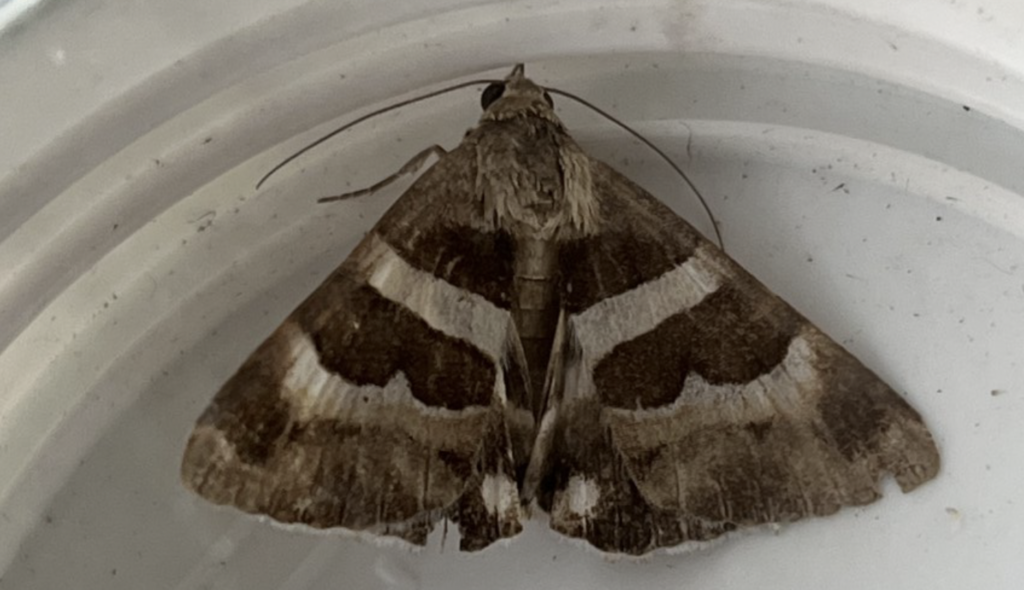By John Maxen
Following my article last month about the appearance in my garden of the very rare Geometrician Moth, several enquires were received from readers wondering if a similar moth seen in their gardens was also a Geometrician. The answer (unfortunately) is no. The moth observed was the Jersey Tiger moth.
Above you will see pictures of both moths and here are a few words about how they differ in size, colour and wing shape
The Geometrician is found in Africa, southern Europe, most of Asia and Australia. The wingspan is c. 40-44mm. The forewings are two-thirds black brown, crossed at middle by a pale ochreous band. The hind wings are brown in colour tinged with olive green. When folded, the wings form the shape of an isosceles triangle. This species has only ever been recorded twice in the British Isles; once in 1903 in south Devon, and more recently in 1990 in East Sussex, when an individ-ual was attracted to light. Both records were in September. There have also been two records from The Scilly Isles.
The Jersey Tiger moth has creamy white strips on its black forewings and bold orange (but can be red or yellow) with black spots on the underwing. The wingspan is c. 50-65mm and has been described as “Vulcan Bomber shaped” when folded. This species was until recently restricted in distri-bution to the Channel Islands and parts of the south coast. It now seems to be expanding its range east and north quite quickly. There is also a thriving population in parts of Lon-don. It flies both in the daytime, when it can be found feeding on various flowers, as well as at night, when it is attracted to light.

